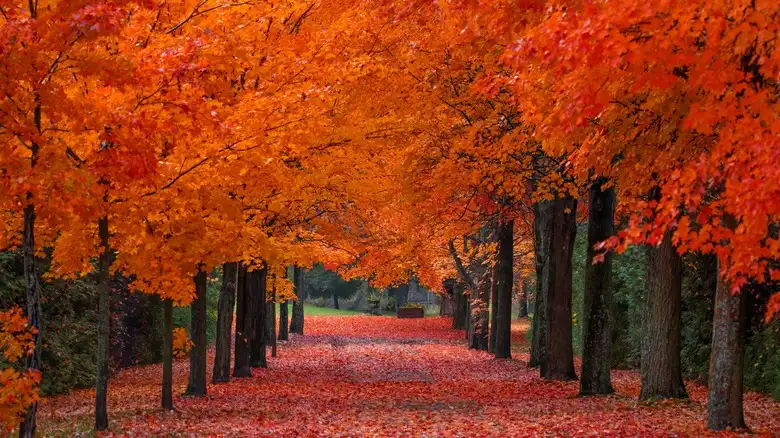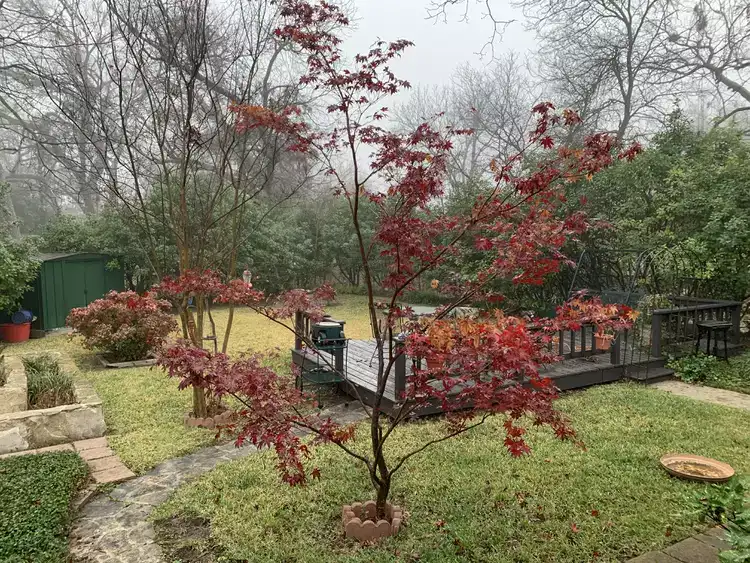Red maple (Acer rubrum) has earned its place as a beloved tree across the United States and for good reason. With its early spring blossoms, vibrant autumn hues, and resilient nature, it’s both beautiful and practical. Recognized as Rhode Island’s state tree and celebrated by arborists for its ornamental value, red maple deserves consideration for any homeowner looking to enhance their landscape.
The Appeal of Red Maple
Red maple is one of the first trees to bloom in spring, showing off clusters of red flowers even before its leaves emerge. But its standout quality is the brilliant foliage that lights up the landscape each fall in shades of scarlet, orange, and gold sometimes all on the same tree. The color display is not only stunning but also long-lasting, often among the earliest to appear in autumn.
In contrast to many fast-growing trees, red maple offers quick shade without sacrificing structural integrity. It resists the brittleness and messiness common to rapid growers, making it a reliable choice for homeowners seeking both speed and strength.
Growth Habit and Range
Red maple grows into a rounded to oval-shaped tree, typically reaching heights between 40 and 70 feet. Its robust wood supports a strong structure, making it suitable for various urban and suburban environments. Transplanting is rarely an issue, even at a mature age.
This tree boasts one of the widest north-to-south ranges in eastern North America, from Canada to southern Florida. While it may be shorter in the southern parts of its range particularly if not planted near water it still thrives in a wide variety of soils and moisture conditions. However, red maple is less suited to USDA Zone 9 and may not perform well in extreme southern climates.
Spring Signals
Red maple’s seasonal cycle begins early. Leaf buds swell, red flowers bloom, and fruits unfold, often serving as a natural signal that spring has arrived. The tree’s seeds are a favorite for squirrels and birds. It can sometimes be mistaken for red-leafed Norway maple cultivars, so careful identification is essential.

Top Red Maple Cultivars to Consider
If you’re planning to plant red maple, choosing the right cultivar is key. Some options offer more consistent fall color or a particular growth shape.
- ‘Armstrong’: Columnar form, silver-gray bark, with red to yellow fall leaves. Grows successfully in all 50 states.
- ‘Bowhall’: Pyramidal shape resembling Norway maple. Displays a wide range of autumn hues. Hardy across the U.S.
- ‘Autumn Blaze’: A hybrid between silver maple and red maple, known for its rapid growth and fiery fall foliage. Best suited for Zones 4–8.
Identifying Red Maple
Understanding how to distinguish red maple can help ensure you’re planting the right tree.
- Leaves: Opposite, long-petioled, typically 6–10 cm long, with three primary lobes and sometimes two smaller ones. Upper surfaces are dull green, undersides are paler or silvery with light hairs.
- Flowers: Pink to dark red, usually about 3 mm long. Trees may bear male, female, or bisexual flowers sometimes all on the same plant. Flowers cluster in either fascicles or drooping racemes.
- Fruits: Red to reddish-brown samaras (winged seeds), measuring around 2–2.5 cm, typically in pairs on long stalks.
The tree’s name comes from its reddish twigs, buds, flowers, and foliage, giving it seasonal interest throughout the year.
Expert Endorsements
“It is a tree for all seasons that develops into an attractive yard specimen under a great range of soil and climatic conditions.”
– Guy Sternberg, Native Trees for North American Landscapes
“The red, red maple. Native to the wet soils of America’s eastern half, it has become one of the Nation’s favorite — if not the hardiest — street trees.”
– Arthur Plotnik, The Urban Tree Book
“Reddish flowers appear in early spring and are followed by red fruit. The smooth gray bark is quite attractive, particularly on young plants.”
– Michael Dirr, Dirr’s Hardy Trees and Shrubs
With its fast growth, colorful appeal, and impressive adaptability, red maple is more than just a pretty tree it’s a smart addition to many landscapes. Whether you’re after shade, wildlife interest, or vivid seasonal color, red maple delivers across the board. Choose a cultivar suited to your region, and you’ll be rewarded with years of dependable beauty.





